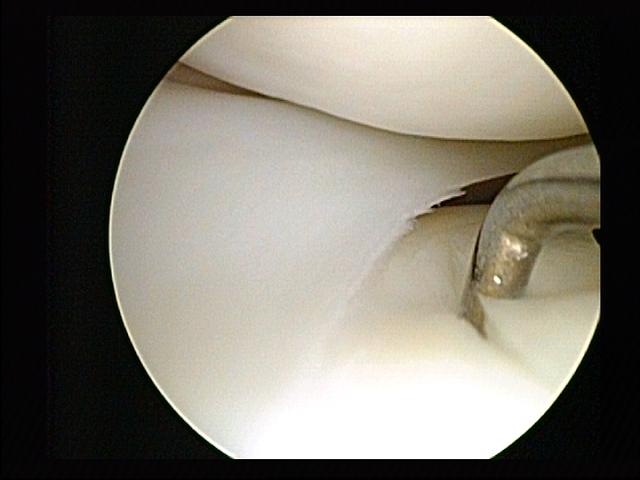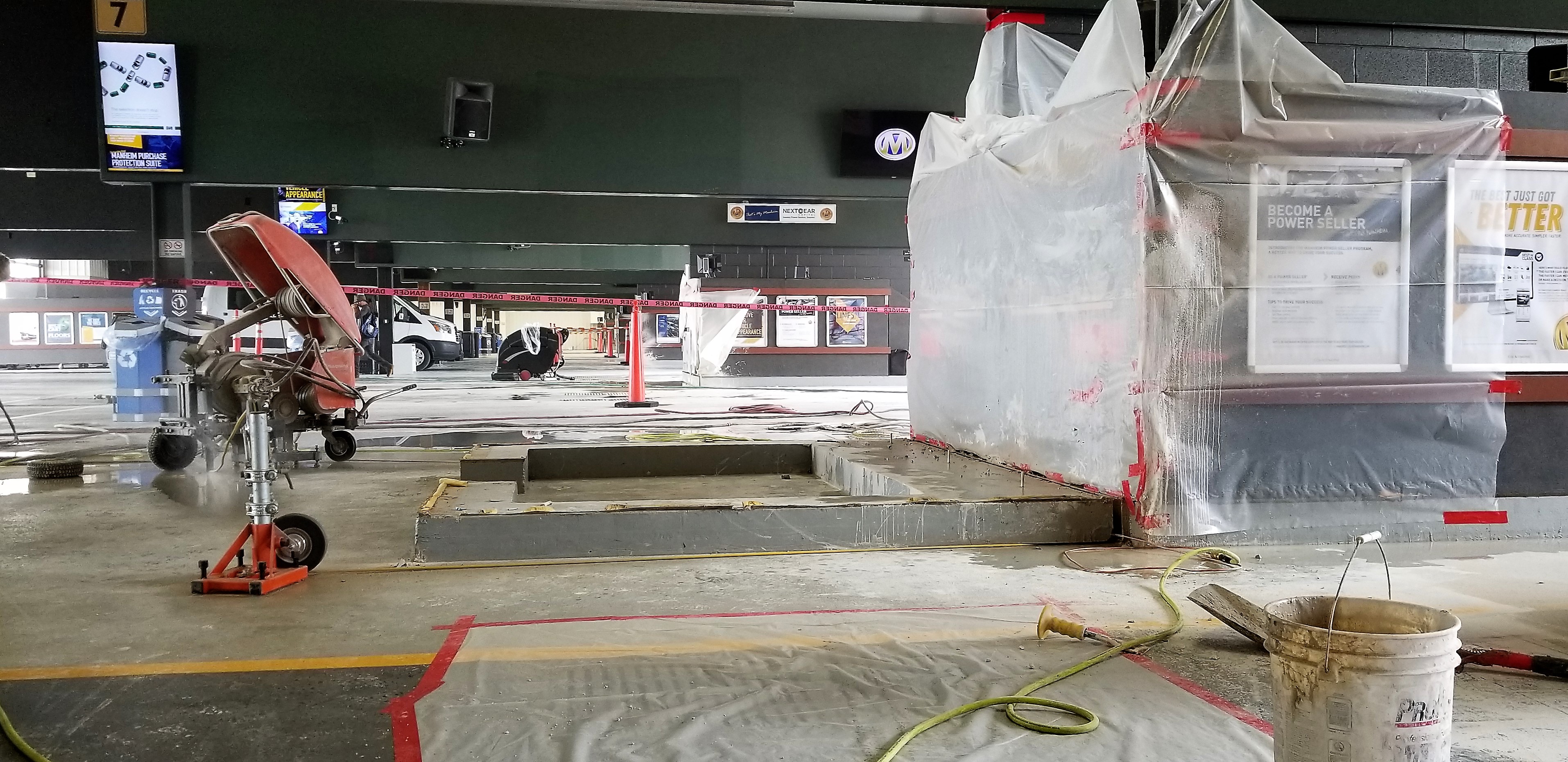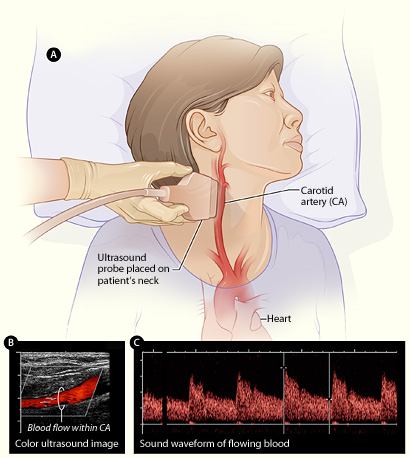|
Thread Carpal Tunnel Release
Thread carpal tunnel release (TCTR) is a minimally-invasive procedure of performing carpal tunnel release using a piece of surgical dissecting thread as a dividing element. This is instead of using a scalpel as in the situation of open carpal tunnel release (OCTR) or endoscopic carpal tunnel release (ECTR). Procedure Under the real-time guidance of ultrasound, a spinal needle is inserted at the palm of the hand and advanced underneath the transverse carpal ligament (TCL) and exiting at the wrist. Through this needle, a fine smooth thread (0.2 mm in diameter) is fed. The needle is inserted again in the same fashion over the TCL and the thread is again looped through back out of the original needle entry. The thread surrounds the TCL and is manipulated in a back and forth motion to divide the TCL. Once complete, the thread is removed and two small bandages are placed on the needle puncture sites. The procedure takes 10 minutes in a clinic based office. Thread The fricti ... [...More Info...] [...Related Items...] OR: [Wikipedia] [Google] [Baidu] |
Minimally-invasive Procedure
Minimally invasive procedures (also known as minimally invasive surgeries) encompass surgical techniques that limit the size of incisions needed, thereby reducing wound healing time, associated pain, and risk of infection. Surgery by definition is invasive and many operations requiring incisions of some size are referred to as ''open surgery''. Incisions made during open surgery can sometimes leave large wounds that may be painful and take a long time to heal. Advancements in medical technologies have enabled the development and regular use of minimally invasive procedures. For example, endovascular aneurysm repair, a minimally invasive surgery, has become the most common method of repairing abdominal aortic aneurysms in the US as of 2003. The procedure involves much smaller incisions than the corresponding open surgery procedure of open aortic surgery. Interventional radiologists were the forerunners of minimally invasive procedures. Using imaging techniques, radiologists were ... [...More Info...] [...Related Items...] OR: [Wikipedia] [Google] [Baidu] |
Carpal Tunnel Surgery
Carpal tunnel surgery, also called carpal tunnel release (CTR) and carpal tunnel decompression surgery, is a surgery in which the transverse carpal ligament is divided. It is a surgical treatment for carpal tunnel syndrome (CTS) and recommended when there is constant (not just intermittent) numbness, muscle weakness, or atrophy, and when night-splinting no longer controls intermittent symptoms of pain in the carpal tunnel. In general, milder cases can be controlled for months to years, but severe cases are unrelenting symptomatically and are likely to result in surgical treatmenLong-term outcomes of carpal tunnel release: a critical review of the literatureApproximately 500,000 surgical procedures are performed each year, and the economic impact of this condition is estimated to exceed $2 billion annually. Indications The procedure is used as a treatment for carpal tunnel syndrome and according to the American Academy of Orthopaedic Surgeons (AAOS) treatment guidelines, early surger ... [...More Info...] [...Related Items...] OR: [Wikipedia] [Google] [Baidu] |
Endoscopic Carpal Tunnel Release
Endoscopic carpal tunnel release (ECTR) refers to a method of performing carpal tunnel surgery using an endoscope or an arthroscopic device to provide visualization of the anatomic structures. Endoscopic techniques for carpal tunnel release involve one or two smaller incisions (less than half inch each) through which instrumentation is introduced including a synovial elevator, probes, knives, and an endoscope used to visualize the underside of the transverse carpal ligament. The endoscopic methods do not divide the subcutaneous tissues or the palmar fascia to the same degree as the open method does. Many studies have been done to determine whether the perceived benefits of a limited endoscopic or arthroscopic release are significant. Many surgeons have embraced limited incision methods. It is considered to be the procedure of choice for many of these surgeons with respect to idiopathic carpal tunnel syndrome. Supporting this are the results of some of the previously mentioned ... [...More Info...] [...Related Items...] OR: [Wikipedia] [Google] [Baidu] |
Friction
Friction is the force resisting the relative motion of solid surfaces, fluid layers, and material elements sliding (motion), sliding against each other. There are several types of friction: *Dry friction is a force that opposes the relative lateral motion of two solid surfaces in contact. Dry friction is subdivided into ''static friction'' ("stiction") between non-moving surfaces, and ''kinetic friction'' between moving surfaces. With the exception of atomic or molecular friction, dry friction generally arises from the interaction of surface features, known as Asperity (materials science), asperities (see Figure 1). *Fluid friction describes the friction between layers of a viscous fluid that are moving relative to each other. *Lubricated friction is a case of fluid friction where a lubricant fluid separates two solid surfaces. *Skin friction is a component of Drag (physics), drag, the force resisting the motion of a fluid across the surface of a body. *Internal friction is t ... [...More Info...] [...Related Items...] OR: [Wikipedia] [Google] [Baidu] |
Abrasive
An abrasive is a material, often a mineral, that is used to shape or finish a workpiece through rubbing which leads to part of the workpiece being worn away by friction. While finishing a material often means polishing it to gain a smooth, reflective surface, the process can also involve roughening as in satin, matte or beaded finishes. In short, the ceramics which are used to cut, grind and polish other softer materials are known as abrasives. Abrasives are extremely commonplace and are used very extensively in a wide variety of industrial, domestic, and technological applications. This gives rise to a large variation in the physical and chemical composition of abrasives as well as the shape of the abrasive. Some common uses for abrasives include grinding, polishing, buffing, honing, cutting, drilling, sharpening, lapping, and sanding (see abrasive machining). (For simplicity, "mineral" in this article will be used loosely to refer to both minerals and mineral-like substances ... [...More Info...] [...Related Items...] OR: [Wikipedia] [Google] [Baidu] |
Wire Saw
A wire saw is a saw that uses a metal wire or cable for mechanical cutting of bulk solid material such as stone, wood, glass, ferrites, concrete, metals, crystals etc.. Industrial wire saws are usually powered. There are also hand-powered survivalist wire saws suitable for cutting tree branches. Wire saws are classified as continuous (or endless, or loop) or oscillating (or reciprocating). Sometimes the wire itself is referred to as a "blade". Wire saws are similar in principle to band saws or reciprocating saws, but they use abrasion to cut rather than saw teeth. Depending on the application, diamond material may or may not be used as an abrasive. The wire can have one strand or many strands braided together (cable). A single-strand saw can be roughened to be abrasive, abrasive compounds can be bonded to the cable, or diamond-impregnated beads (and spacers) can be threaded on the cable. Wire saws are often cooled and lubricated by water or oil. Types Wilderness Surviva ... [...More Info...] [...Related Items...] OR: [Wikipedia] [Google] [Baidu] |
Shear Force
In solid mechanics, shearing forces are unaligned forces acting on one part of a body in a specific direction, and another part of the body in the opposite direction. When the forces are collinear (aligned with each other), they are called tension forces and compression forces. William A. Nash defines shear force in terms of planes Plane(s) most often refers to: * Aero- or airplane, a powered, fixed-wing aircraft * Plane (geometry), a flat, 2-dimensional surface Plane or planes may also refer to: Biology * Plane (tree) or ''Platanus'', wetland native plant * ''Planes' ...: "If a plane is passed through a body, a force acting along this plane is called a ''shear force'' or ''shearing force''." Force required to shear steel This section calculates the force required to cut a piece of material with a shearing action. The relevant information is the area of the material being sheared, ie the area across which the shearing action takes place, and the shear strength of ... [...More Info...] [...Related Items...] OR: [Wikipedia] [Google] [Baidu] |
Transect
A transect is a path along which one counts and records occurrences of the objects of study (e.g. plants). There are several types of transect. Some are more effective than others. It requires an observer to move along a fixed path and to count occurrences along the path and, at the same time (in some procedures), obtain the distance of the object from the path. This results in an estimate of the area covered and an estimate of the way in which detectability increases from probability 0 (far from the path) towards 1 (near the path). Using the raw count and this probability function, one can arrive at an estimate of the actual density of objects. The estimation of the abundance of populations (such as terrestrial mammal species) can be achieved using a number of different types of transect methods, such as strip transects, line transects, belt transects, point transects and curved line transect In mathematics, a curve (also called a curved line in older texts) is an object ... [...More Info...] [...Related Items...] OR: [Wikipedia] [Google] [Baidu] |
Percutaneous
{{More citations needed, date=January 2021 In surgery, a percutaneous procedurei.e. Granger et al., 2012 is any medical procedure or method where access to inner organs or other tissue is done via needle-puncture of the skin, rather than by using an "open" approach where inner organs or tissue are exposed (typically with the use of a scalpel). The percutaneous approach is commonly used in vascular procedures such as angioplasty and stenting. This involves a needle catheter getting access to a blood vessel, followed by the introduction of a wire through the lumen (pathway) of the needle. It is over this wire that other catheters can be placed into the blood vessel. This technique is known as the modified Seldinger technique. More generally, "percutaneous", via its Latin roots means, 'by way of the skin'. An example would be percutaneous drug absorption from topical medications. More often, percutaneous is typically used in reference to placement of medical devices using a n ... [...More Info...] [...Related Items...] OR: [Wikipedia] [Google] [Baidu] |
Ultrasound Machine
Medical ultrasound includes diagnostic techniques (mainly imaging techniques) using ultrasound, as well as therapeutic ultrasound, therapeutic applications of ultrasound. In diagnosis, it is used to create an image of internal body structures such as tendons, muscles, joints, blood vessels, and internal organs, to measure some characteristics (e.g. distances and velocities) or to generate an informative audible sound. Its aim is usually to find a source of disease or to exclude pathology. The usage of ultrasound to produce visual images for medicine is called medical ultrasonography or simply sonography. The practice of examining pregnant women using ultrasound is called obstetric ultrasonography, and was an early development of clinical ultrasonography. Ultrasound is composed of sound waves with frequency, frequencies which are significantly higher than the range of human hearing (>20,000 Hz). Ultrasonic images, also known as sonograms, are created by sending pulses of u ... [...More Info...] [...Related Items...] OR: [Wikipedia] [Google] [Baidu] |
Palmar Aponeurosis
The palmar aponeurosis (palmar fascia) invests the muscles of the palm, and consists of central, lateral, and medial portions. Structure The central portion occupies the middle of the palm, is triangular in shape, and of great strength Its apex is continuous with the lower margin of the transverse carpal ligament, and receives the expanded tendon of the palmaris longus. Its base divides below into four slips, one for each finger. Each slip gives off superficial fibers to the skin of the palm and finger, those to the palm joining the skin at the furrow corresponding to the metacarpophalangeal articulations, and those to the fingers passing into the skin at the transverse fold at the bases of the fingers. The deeper part of each slip subdivides into two processes, which are inserted into the fibrous sheaths of the flexor tendons. From the sides of these processes offsets are attached to the transverse metacarpal ligament. By this arrangement short channels are formed on the fr ... [...More Info...] [...Related Items...] OR: [Wikipedia] [Google] [Baidu] |





.jpg)
